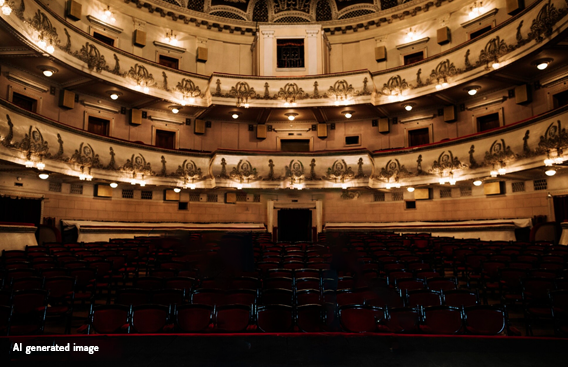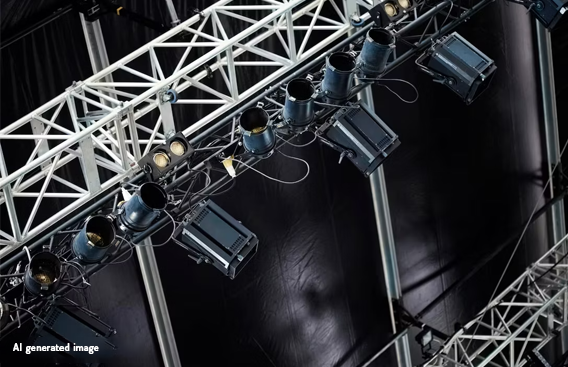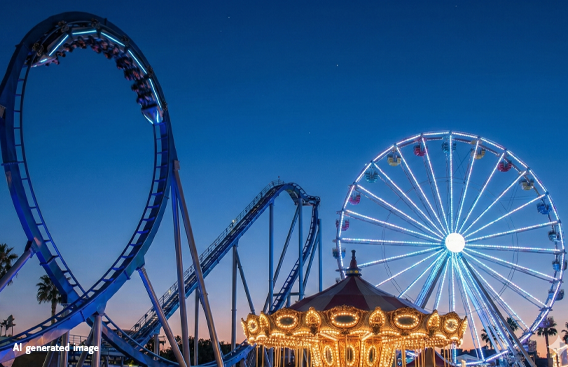Early theatres
The first buildings used for theatrical performances in Britain were amphitheatres introduced by the Romans, who copied theatres from ancient Greece. These were semi-circular structures, constructed of wood initially and later stone. They were open to the air with banked seating surrounding a raised stage.
Medieval theatre was presented on elaborate temporary stages inside great halls, barns, or in the open courtyards of galleried inns. It was from these that Elizabethan timber-framed open-air theatres took their form, such as the Globe in London. They were often multi-sided buildings, with a covered platform stage against one side. The audience sat or stood in covered galleries around the other sides or in the open courtyard. All the performances took place in daylight.
Seventeenth-century theatres
Interest in theatre increased during the Stuart period. Many rich courtiers and aristocrats hosted touring theatrical productions in their homes. Masques too were a popular form of recreation for the royal court and the very rich, often commissioned for celebrations. They would involve music, dance and elaborate costumes and scenery. The architect Inigo Jones devised the sets for several royal masques, and later went on to design theatre buildings. He had toured Italy and France and was heavily influenced by their designs. He is also attributed with introducing the first proscenium arch – a decorative architectural frame over a thrust stage.
After the execution of Charles I in 1642, theatrical performances were outlawed owing to the threat of civil unrest. Theatres closed and many were demolished.
Following the restoration of the monarchy twenty years later, interest in theatre resumed. In reward for their loyalty to the Crown, Charles II issued patents to two theatre companies in London, Davenant and Killigrew, to stage drama. They presented at various sites across the city before they set up permanent theatres in Drury Lane and Covent Garden. Later, the King issued limited patents to a few more theatres in London. However, by this time, theatre buildings began to change, influenced by those in Europe. They were now roofed, with stages for changeable scenery that was slid into position using grooves in their floors. Other scenery was flown in from above. To accommodate these elaborate stage sets more space was needed behind the stage.
Eighteenth-century theatres
The Licensing Act of 1737 tightened censorship of drama, placing it under the control of the Lord Chamberlain. Only patent theatres were able to perform drama – known as legitimate theatre. Non-patent theatres performed melodrama, pantomime, ballet, opera and music hall (burlesque). As these involved music or musical interludes they could not be classed as plays and were regarded as illegitimate theatre so were not subject to the Licensing Act.
Later, a series of royal patents were granted to cities outside London. These became known as “Theatres Royal”. Many still operate and were built in a restrained neo-classical style.
Also in the eighteenth century, companies of players began to travel on regular circuits between market towns. They set up their own theatres, called playhouses, which were similar in shape and size. This enabled stock scenery to be easily erected and reused, which made touring easier. Hundreds were built, of modest size and exterior. Their interiors were simple, consisting of a rectangular flat-floored room with a stage that projected into the audience. People sat on benched seating on the floor in front of the stage, or on balconies against the three remaining walls supported by columns or wooden posts. Any scenery was placed at the rear of the stage. The rich could pay a little more in order to sit on the stage, not only for better viewing, but also to be seen by the rest of the audience and the cast. These theatres were open for limited periods, and when not needed for performances could be used for other functions, for example as assembly rooms or ballrooms.
Theatres had mainly wooden interiors which were always at risk of fire. In 1794 the Drury Lane Theatre, London introduced the first iron safety curtain, which would eventually become a statutory requirement in all large theatres. It also had a large water tank on its roof – a feature that was adopted by other theatres – to extinguish fire in the stage area. The theatre also began to make its scenery more fire-resistant.
By the end of the century the façades of many city theatres were built in the more imposing classical style. Some even had porticoes, similar to those seen on the front of large city homes or country houses. They were added mainly for show, but a few enabled the rich to descend from their carriages and enter the theatre without being exposed to any inclement weather.
[Source: Theatres Trust – original article]
[Pictures: Theatres Trust/Ian Grundy]




